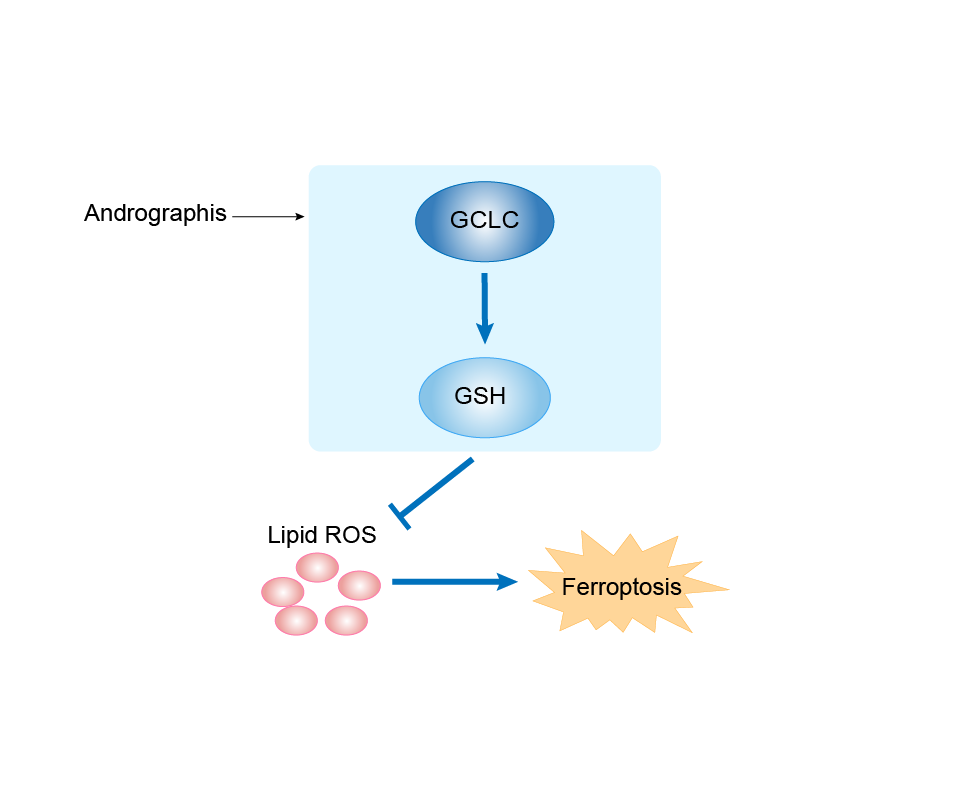Ferroptosis Target Information
General Information of the Ferroptosis Target (ID: TAR10025)
| Target Name | Glutamate--cysteine ligase catalytic subunit (GCLC) | ||||
|---|---|---|---|---|---|
| Synonyms |
GCS heavy chain; Gamma-ECS; Gamma-glutamylcysteine synthetase
Click to Show/Hide
|
||||
| Gene Name | GCLC | ||||
| Sequence |
MGLLSQGSPLSWEETKRHADHVRRHGILQFLHIYHAVKDRHKDVLKWGDEVEYMLVSFDH
ENKKVRLVLSGEKVLETLQEKGERTNPNHPTLWRPEYGSYMIEGTPGQPYGGTMSEFNTV EANMRKRRKEATSILEENQALCTITSFPRLGCPGFTLPEVKPNPVEGGASKSLFFPDEAI NKHPRFSTLTRNIRHRRGEKVVINVPIFKDKNTPSPFIETFTEDDEASRASKPDHIYMDA MGFGMGNCCLQVTFQACSISEARYLYDQLATICPIVMALSAASPFYRGYVSDIDCRWGVI SASVDDRTREERGLEPLKNNNYRISKSRYDSIDSYLSKCGEKYNDIDLTIDKEIYEQLLQ EGIDHLLAQHVAHLFIRDPLTLFEEKIHLDDANESDHFENIQSTNWQTMRFKPPPPNSDI GWRVEFRPMEVQLTDFENSAYVVFVVLLTRVILSYKLDFLIPLSKVDENMKVAQKRDAVL QGMFYFRKDICKGGNAVVDGCGKAQNSTELAAEEYTLMSIDTIINGKEGVFPGLIPILNS YLENMEVDVDTRCSILNYLKLIKKRASGELMTVARWMREFIANHPDYKQDSVITDEMNYS LILKCNQIANELCECPELLGSAFRKVKYSGSKTDSSN Click to Show/Hide
|
||||
| Family | Glutamate-cysteine ligase type 3 family | ||||
| Function |
Catalyzes the ATP-dependent ligation of L-glutamate and L- cysteine and participates in the first and rate-limiting step in glutathione biosynthesis.
Click to Show/Hide
|
||||
| Gene ID | 2729 | ||||
| Uniprot ID | |||||
| Target Type | Driver Suppressor Marker | ||||
| Mechanism Diagram | Click to View the Original Diagram | ||||

|
|||||
Tissue Relative Abundances of This Target
Full List of Regulator(s) of This Ferroptosis Target and Corresponding Disease/Drug Response(s)
GCLC can be involved in and affect the ferroptosis by the following regulators, and result in corresponding disease/drug response(s). You can browse corresponding disease or drug response(s) resulting from the regulation of certain regulators.
Browse Regulator related Disease
Browse Regulator related Drug
Unspecific Regulator
Gastric cancer [ICD-11: 2B72]
| In total 1 item(s) under this disease | ||||
| Experiment 1 Reporting the Ferroptosis-centered Disease Response of This Regulator | [1] | |||
| Responsed Drug | Andrographis | Approved | ||
| Pathway Response | Fatty acid metabolism | hsa01212 | ||
| Apoptosis | hsa04210 | |||
| Cell Process | Cell ferroptosis | |||
| Cell apoptosis | ||||
| Cell proliferation | ||||
In Vitro Model |
MKN74 cells | Gastric tubular adenocarcinoma | Homo sapiens | CVCL_2791 |
| NUGC-4 cells | Gastric signet ring cell adenocarcinoma | Homo sapiens | CVCL_3082 | |
| Response Description | Andrographis exerted antitumor effects in gastric cancer cell lines (MKN74 and NUGC4) by inhibiting proliferation, reducing colony formation and enhancing apoptotic activity. Moreover, andrographis treatment altered the expression of ferroptosis-associated genes, including HMOX1, GCLC, and GCLM. | |||
Unspecific Regulator
Andrographis
[Approved]
| In total 1 item(s) under this drug | ||||
| Experiment 1 Reporting the Ferroptosis-centered Drug Response of This Regulator | [1] | |||
| Responsed Disease | Gastric cancer [ICD-11: 2B72] | |||
| Pathway Response | Fatty acid metabolism | hsa01212 | ||
| Apoptosis | hsa04210 | |||
| Cell Process | Cell ferroptosis | |||
| Cell apoptosis | ||||
| Cell proliferation | ||||
| In Vitro Model | MKN74 cells | Gastric tubular adenocarcinoma | Homo sapiens | CVCL_2791 |
| NUGC-4 cells | Gastric signet ring cell adenocarcinoma | Homo sapiens | CVCL_3082 | |
| Response Description | Andrographis exerted antitumor effects in gastric cancer cell lines (MKN74 and NUGC4) by inhibiting proliferation, reducing colony formation and enhancing apoptotic activity. Moreover, andrographis treatment altered the expression of ferroptosis-associated genes, including HMOX1, GCLC, and GCLM. | |||
